25 Interesting Facts About the Swiss Alps
Did you know that the Alps cover about 65 percent of Switzerland? Or that Switzerland features no less than 48 peaks exceeding 4,000 meters in altitude?
If you’re curious, discover more through these 25 interesting facts about the Swiss Alps! 🇨🇭
TABLE OF CONTENTS
The Best Swiss Alps Facts
Full of glaciers, waterfalls, forests and lakes, the Swiss Alps concentrate among the most beautiful places in Switzerland. Whether you’re living in the country or only visiting it, I’m sure you’ll love the facts I’ve gathered in this post, and some of them will certainly surprise you.
1. It took a very long while for the Swiss Alps to be created
Not only did it take long for the whole mountain range to appear, but it was also a complicated process resulting from chain reactions that lasted for millions of years.
Where the Swiss Alps stand now, there was already a mountain range, called the Hercynian mountains. It eroded at the end of the Paleozoic era though. After lots of erosion and floods, the Alpine orogeny began the formation of the Alps, 65 million years ago.
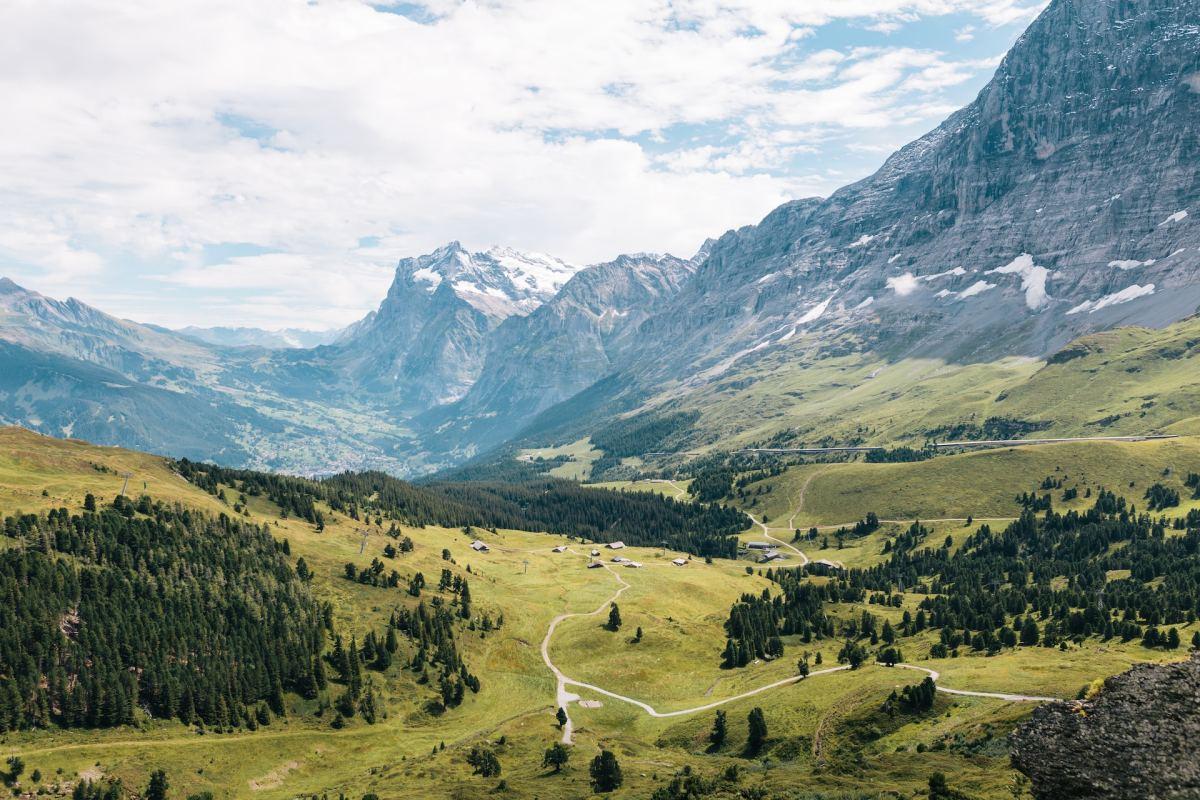
2. Switzerland is the country that is most often associated with the Alps
If you ask anyone about the country in which the Alps are, they will most likely think about Switzerland first. Though many know that it is not only there, the country is still the most closely associated with the mountain range.
Emblems like famous pictures or the Toblerone logo have probably helped cement this idea throughout the years.
3. The Swiss Alps are just a tiny portion of the Alps
As I have just told you, most people associate the Alps with Switzerland, and pretty falsely. In fact, less than 15 percent of the Alps lies within Switzerland.
This means that not only is the mountain range simply huge, but it is also probably “less Swiss” than you would think.
4. Some of the most famous alpine locations are in the Swiss Alps
This explains a lot about why Switzerland is so easily associated with the Alps. In the country, you can see many very famous Alpine locations, like the Matterhorn, the Eiger, and the Jungfrau.
Add lots of other very high peaks and large glaciers, as well as tons of well-marked hiking trails, and there you have it: the Swiss Alps in all their glory.
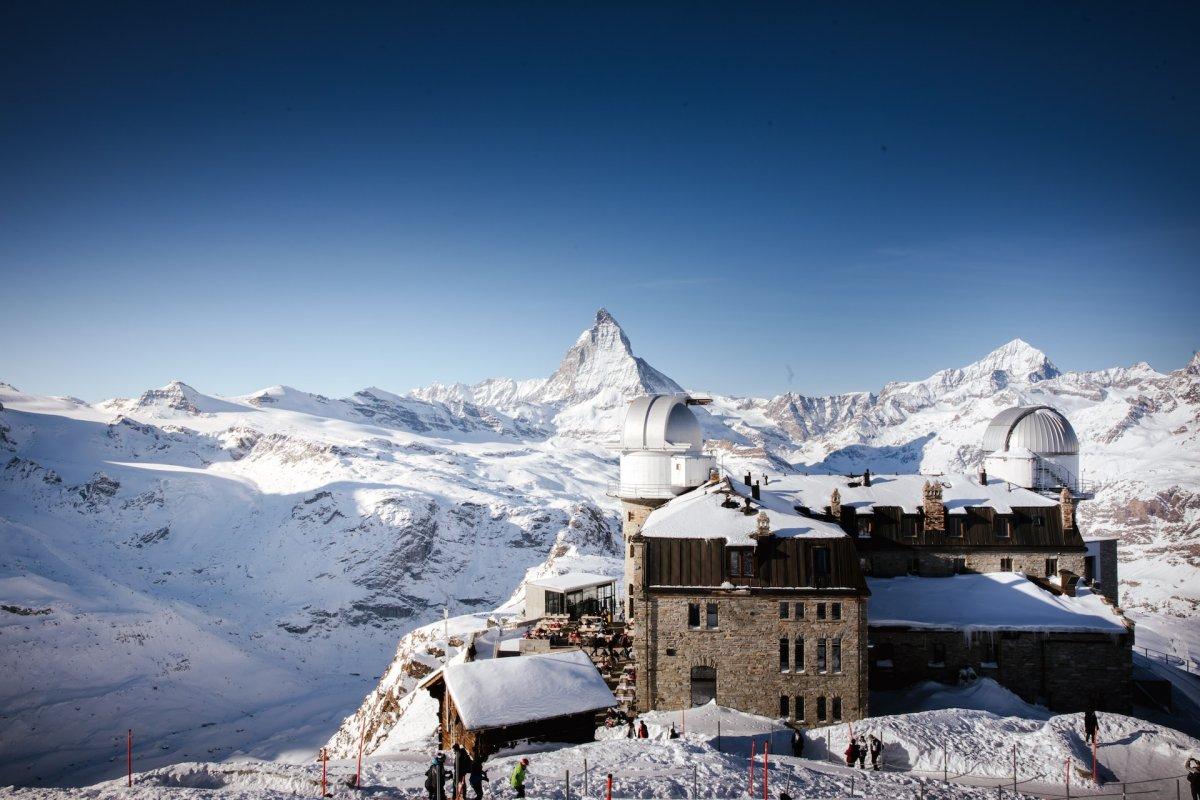
View of Matterhorn from Gornergrat
5. The Alps are a major part of Switzerland
While the Swiss Alps are just a tiny portion of the Alps in general, the other way around does not work: the Alps make up 65 percent of the Swiss territory!
This shows why Switzerland is such a mountainous country, and how heavily culture, tourism, and traditions are quite often related to the Alps.
6. The majority of the highest peaks of the Alps are located in Switzerland
Again, 15 percent is not that much, but Switzerland gathers some of the best areas in the whole mountain range.
Most of the 4,000 m / 13,123 feet peaks (48 out of 82) are situated in the Swiss Alps. What if they are not? The few others lie within 20 km / 12.43 miles of the Swiss border.
7. Transportation was very hard to set up in the Swiss Alps
Because of how steep the terrain of the Swiss Alps is, it was very hard to add transportation there. However, mountain passes have been in use since Celtic times, connecting isolated valleys to the rest of Europe.
When road transportation and trains began to develop, there were fewer extremely isolated areas in the Swiss Alps. Tunnels were built and roads were added for everyone to visit this wonderful region.
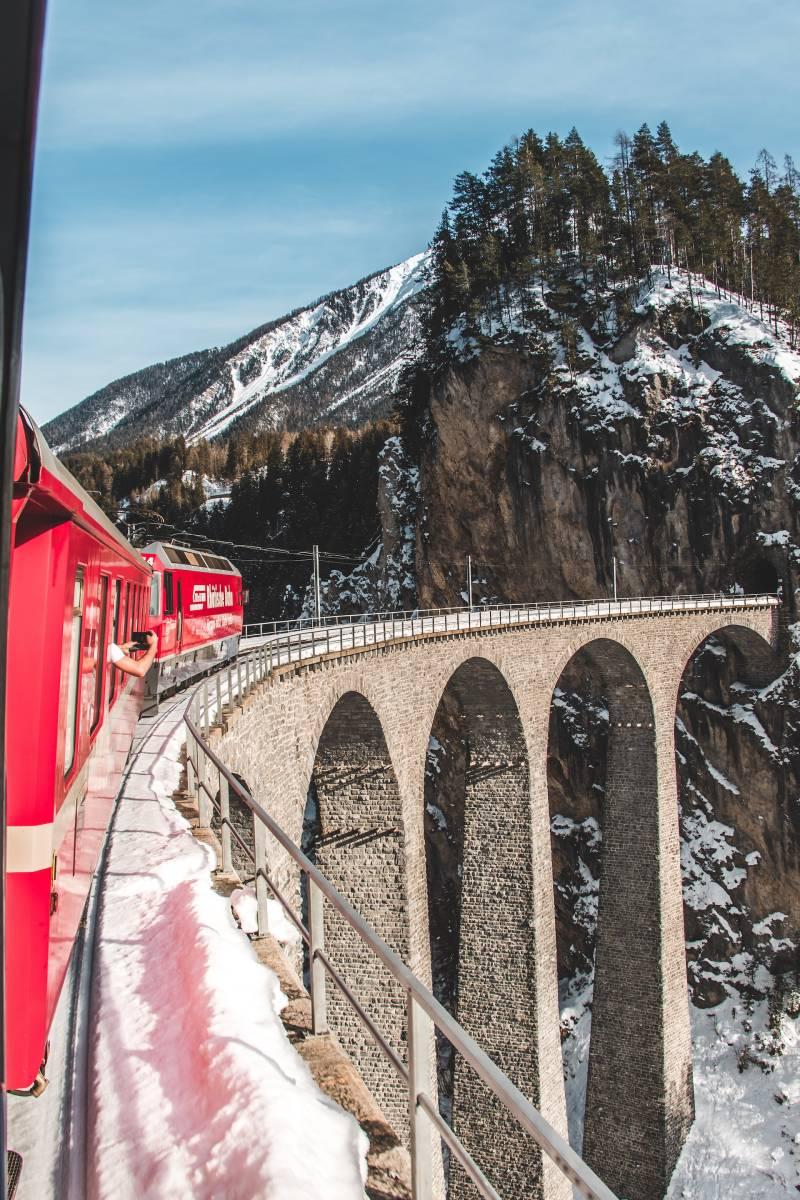
8. The highest peak of the Swiss Alps is Monte Rosa
Peaking at 4,637 m / 15,202 feet above sea level, Monte Rosa is the highest peak in the Swiss Alps, and it is located on the Swiss-Italian border.
It is relatively close to the highest peak of the Alps, Mont Blanc (4,807 m / 15,771 feet), but this one is officially located in France.
9. Even the lowest point in Switzerland is pretty high
Switzerland is the land of mountains. So much in fact that even its lowest point is still relatively high compared to that of most countries.
Ascona, in the canton of Ticino, lies at 196 m / 643 feet above sea level. As a comparison, the lowest French point is 10 m / 33 feet below sea level.
10. There is one route that passes the twelve highest Swiss peaks
If you want to discover all the highest Swiss peaks in one go, you should hike on the “Haute Route”, from Chamonix to Zermatt.
This route is very popular and is one of the (if not the) most scenic treks in all of Europe. You will walk from Mont Blanc, the highest peak of the Alps, to the Matterhorn, arguably the world’s most recognizable mount.
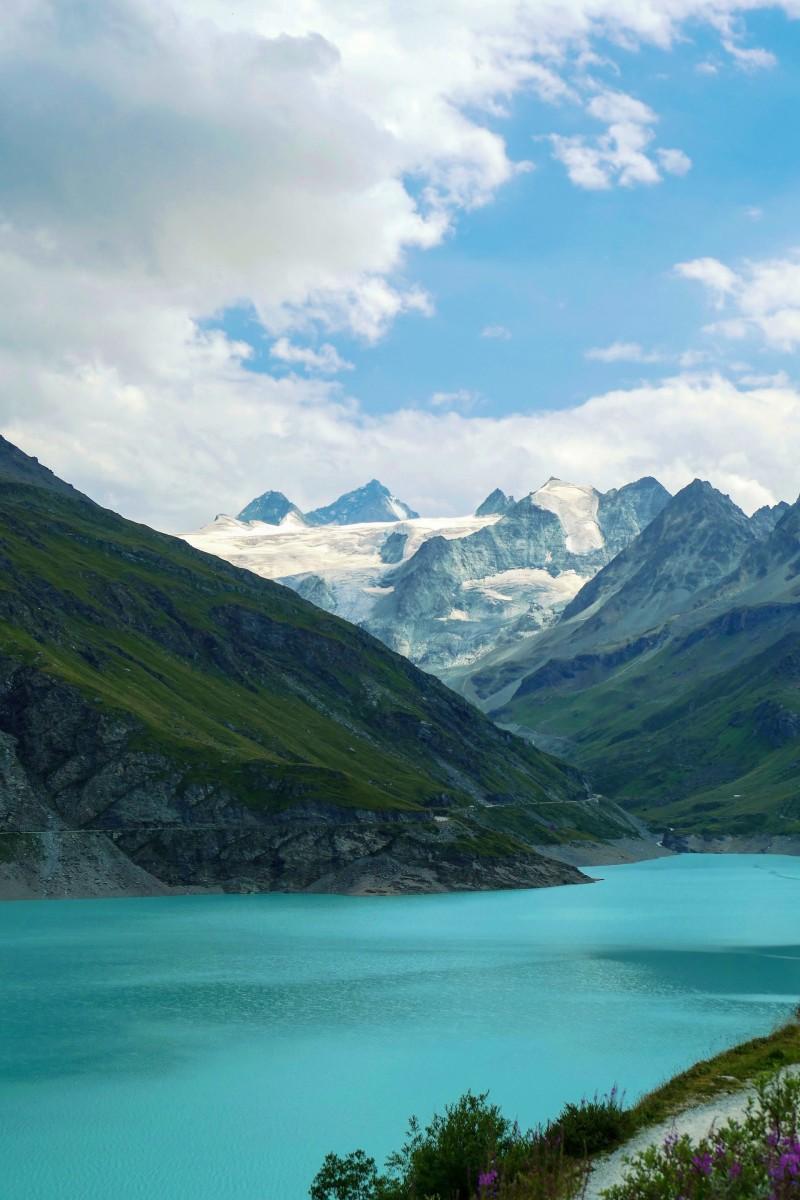
Moiry Lake on the Haute Route trail
11. Many languages are spoken in the Alps
You already know it, the Swiss Alps are only a small portion of the whole mountain range of the Alps.
French is spoken there, not only in France but also in Switzerland. The other most spoken languages are Italian, German, and Slovenian. Various dialects can be heard in the many very different regions that the Alps cross.
12. Toblerone is a Swiss brand and was designed after the Matterhorn
Toblerone is a very unique Swiss chocolate brand that was created in 1908 by Emil Baumann and Theodor Tobler. Its triangle-shaped chocolate bars are immediately recognizable.
But more than that, another reason why the Matterhorn is so popular is that the Toblerone logo is designed after it!
13. The Dom is the highest 100 percent Swiss mountain
Many of the highest peaks in the Alps are so large that they are usually spreading to several countries. This is the case for Mont Blanc for instance, with a French summit but reaching Italian and Swiss areas.
As for Switzerland, the Dom is entirely within the country, and is the highest of these, peaking at 4,545 m / 14,911 feet.
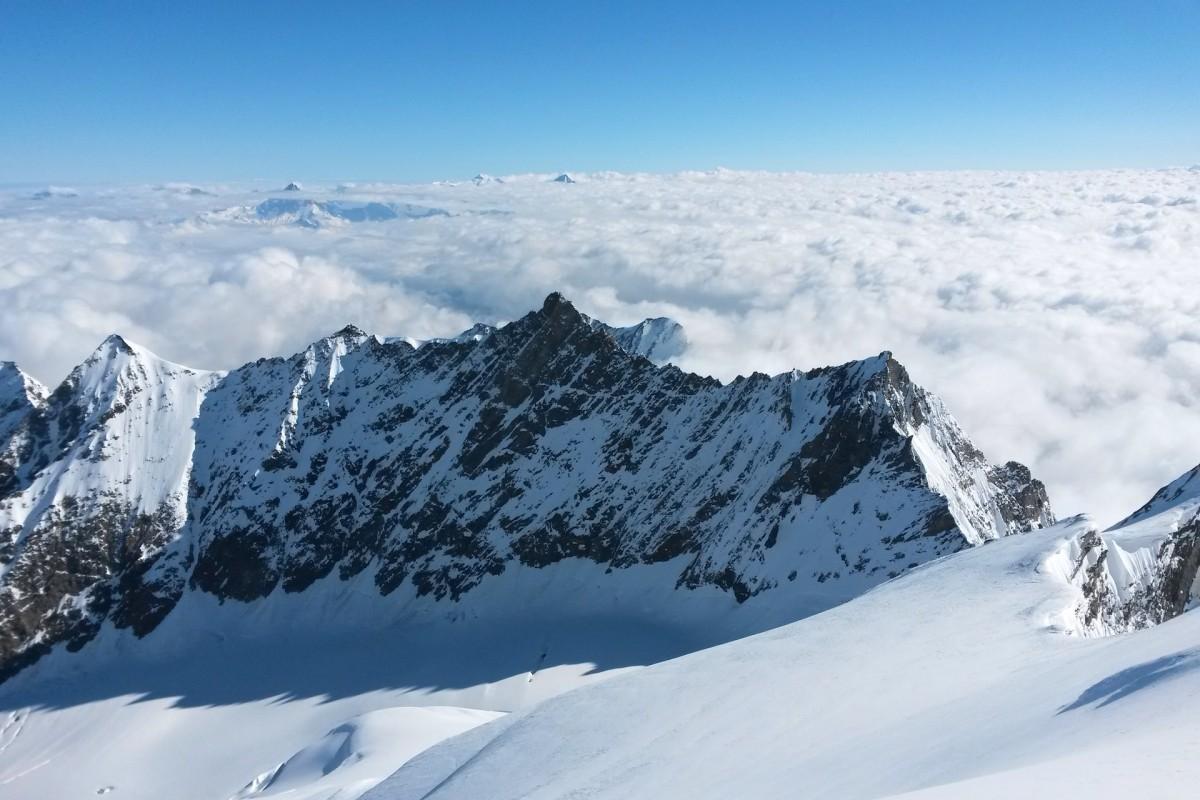
The Dom
14. Almost half of the Alpine glaciers are in Switzerland
By now, you know how Switzerland is not a major part of the Alps, and yet gathers some of the most important areas. Well, that is true again for glaciers.
While Swiss glaciers only cover 3 percent of the country’s area (1,230 km² / 475 sq mi), they account for 44 percent of the total glaciated area in the Alps (2,800 km² / 1,081 sq mi).
15. The largest glacier in the Alps is located in Switzerland
The Aletsch Glacier, locally named “Aletschgletscher” (in German), is the largest glacier in the Alps, and, yet again, it is located in the Swiss Alps.
This natural marvel covers more than 120 km² / 45 sq mi, and has a length of 23 km / 14 miles. More specifically, it is in the Bernese Alps, in the canton of Valais.
16. Switzerland’s hiking trails are much longer than the Earth’s circumference
The circumference of the Earth (basically, the longest line circling the planet) is around 40,000 km / 24,855 miles.
But Switzerland’s hiking trails are over 1.5 times more than that: 62,000 km / 38,525 miles! Among them, 23,000 km / 14,292 miles are in mountainous areas.
17. The Swiss are all about hiking in the Alps
You might think of Swiss people being in love with hiking as very stereotypical, but this is not far from the truth.
As a matter of fact, hiking is actually a way of life in Switzerland. The average Swiss walks around 8 km / 5 miles a day (if you count their 9,650 steps).
18. The highest peak in Europe to be served by cable car is in the Swiss Alps
Yes, the Klein Matterhorn (“small” Matterhorn in German) is less famous than its big brother I already talked about, and yet it is still quite reputed for one thing: its cable car.
Cable cars are very useful in Switzerland, they might be scary to some people but they can save you a lot of time and energy. The Klein Matterhorn is the highest peak in Europe to be served by cable car (3,820 m / 12,533 feet)!
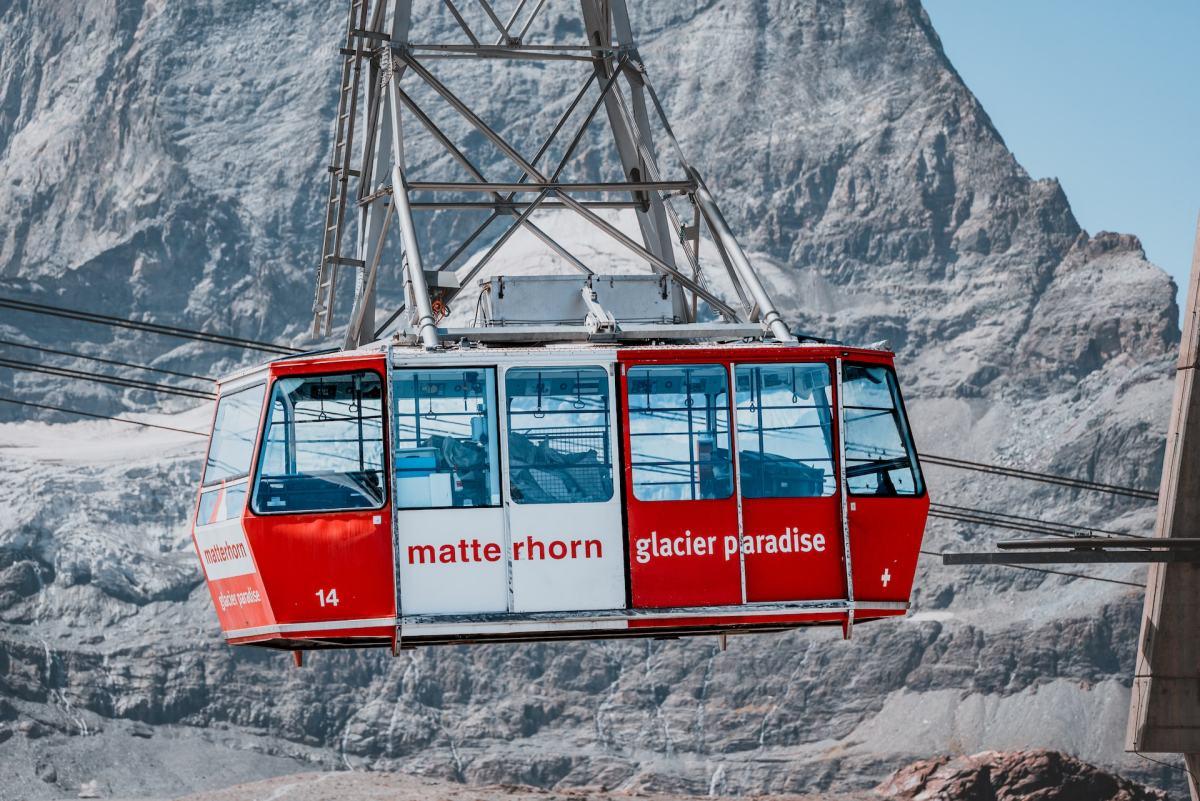
Klein Matterhorn cable car
19. The Alps are Europe’s youngest mountain range
Yes, 65 million years old is not enough to be old in terms of mountain ranges! The French Alps are in fact Europe’s youngest mountain range.
It is said that they have been inhabited for the past 60,000 years. Compare that number to the age of the mountain range and you will realize how old and impressive they are.
20. You can spend the night in an igloo village in the Swiss Alps
Sure, the Swiss Alps are not as cold as either of the Poles, but there is still an igloo village in the city of Zermatt, Switzerland. At the base of the Matterhorn, guests can sleep in a very special place.
There is even a three-story igloo that was built in 2016, and that is now an official Guinness World Record, with around 1,400 snow bricks.
21. The Matterhorn has killed over 500 people over the centuries
This is by far the saddest fact on the list, but I have to talk about it to spread awareness. Climbing mountains is very, very risky, and when it comes to the highest peaks like the Matterhorn, it is even worse.
Since 1865, when people first conquered its summit, the Matterhorn has killed over 500 climbers. This was due to either a lack of experience, bad gear, or weather, generally.
22. The Albula Tunnel is a UNESCO World Heritage Site in Switzerland
One of the most impressive tunnels in Switzerland is the Albula Tunnel. It was built by 1,316 men, from 1898 to 1903, by hand, and claimed 16 lives.
However, the project was still a huge success, and it is the highest underground mainline railway passage in the Alps nowadays.
23. The Swiss Alps have a very developed wildlife
Both flora and fauna are very developed in the Swiss Alps.
The mountain range is home to around 13,000 types of plants, as well as lots of minerals and crystals. On top of that, about 30,000 species of animals live there, ranging from marmots to brown bears.
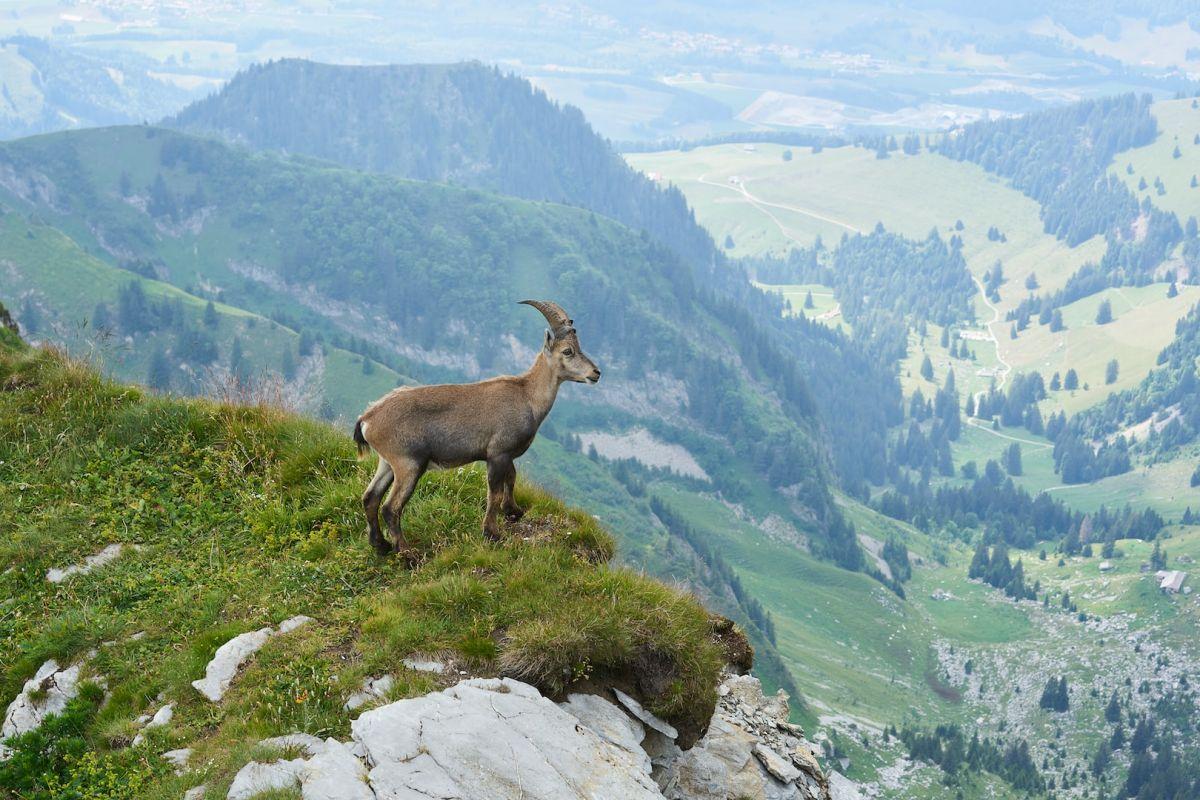
24. The Alps make up 11 percent of the area of Europe
The Alps in general are just huge. They reach many different countries, and constitute 11 percent of Europe’s surface!
Because of this, they have a very strong influence on Europe’s climate. This is due to the fact that the Alps have many huge variations in elevation and exposure, controlling the winds and the air in all of Europe.
25. The Swiss Alps are home to some of the most popular ski stations
This will not come as a surprise: Switzerland is very, very reputed for its ski stations.
More precisely, Zermatt is a relatively small town of 5,700 people, and yet it is one of the most popular ski stations on the planet.
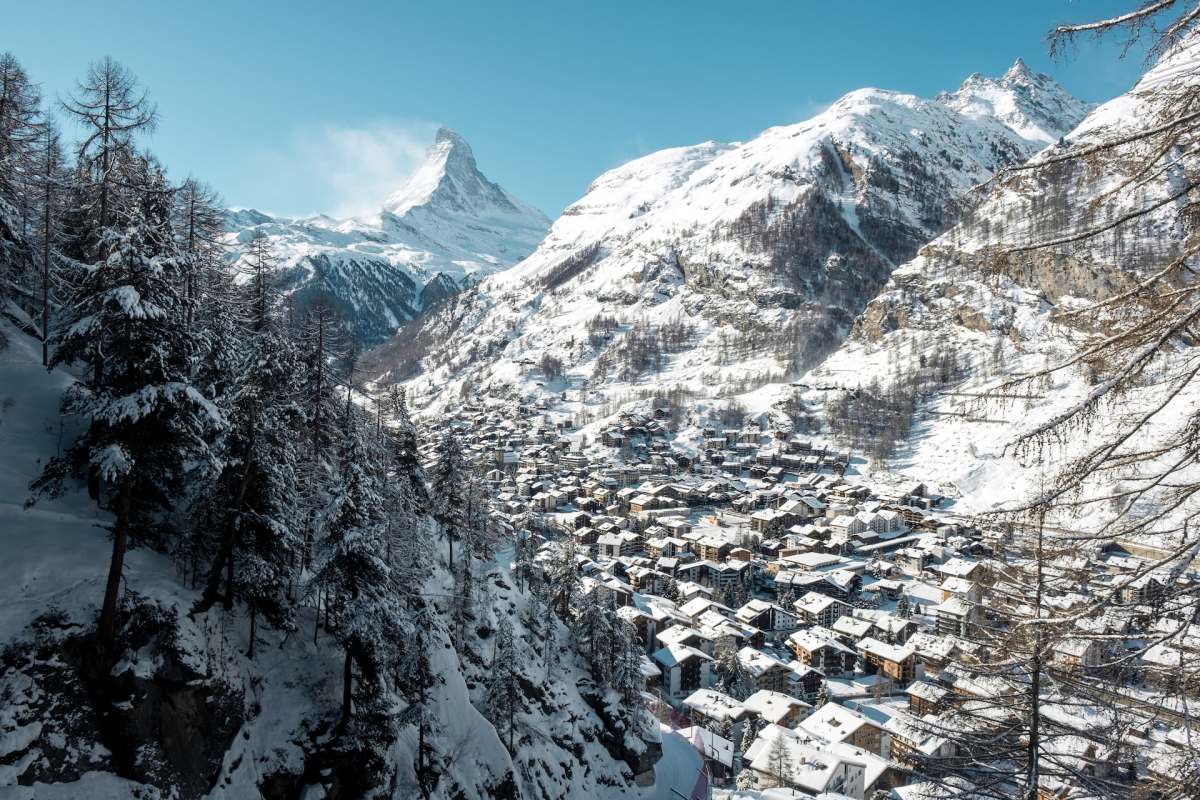
—
So there you have them, these were all the Swiss Alps facts I wanted to share with you. I hope you enjoyed them and that you learned something new today.
The Full List of 25 Swiss Alps Facts
- It took a very long while for the Swiss Alps to be created
- Switzerland is the country that is most often associated with the Alps
- The Swiss Alps are just a tiny portion of the Alps
- Some of the most famous alpine locations are in the Swiss Alps
- The Alps are a major part of Switzerland
- The majority of the highest peaks of the Alps are located in Switzerland
- Transportation was very hard to set up in the Swiss Alps
- The highest peak of the Swiss Alps is Monte Rosa
- Even the lowest point in Switzerland is pretty high
- There is one route that passes the twelve highest Swiss peaks
- Many languages are spoken in the Alps
- Toblerone is a Swiss brand and was designed after the Matterhorn
- The Dom is the highest 100 percent Swiss mountain
- Almost half of the Alpine glaciers are in Switzerland
- The largest glacier in the Alps is located in Switzerland
- Switzerland’s hiking trails are much longer than the Earth’s circumference
- The Swiss are all about hiking in the Alps
- The highest peak in Europe to be served by cable car is in the Swiss Alps
- The Alps are Europe’s youngest mountain range
- You can spend the night in an igloo village in the Swiss Alps
- The Matterhorn has killed over 500 people over the centuries
- The Albula Tunnel is a UNESCO World Heritage Site in Switzerland
- The Swiss Alps have a very developed wildlife
- The Alps make up 11 percent of the area of Europe
- The Swiss Alps are home to some of the most popular ski stations
Share the knowledge! Click on the buttons below to share these fun facts with your friends, and help them learn more about the world 🙂
